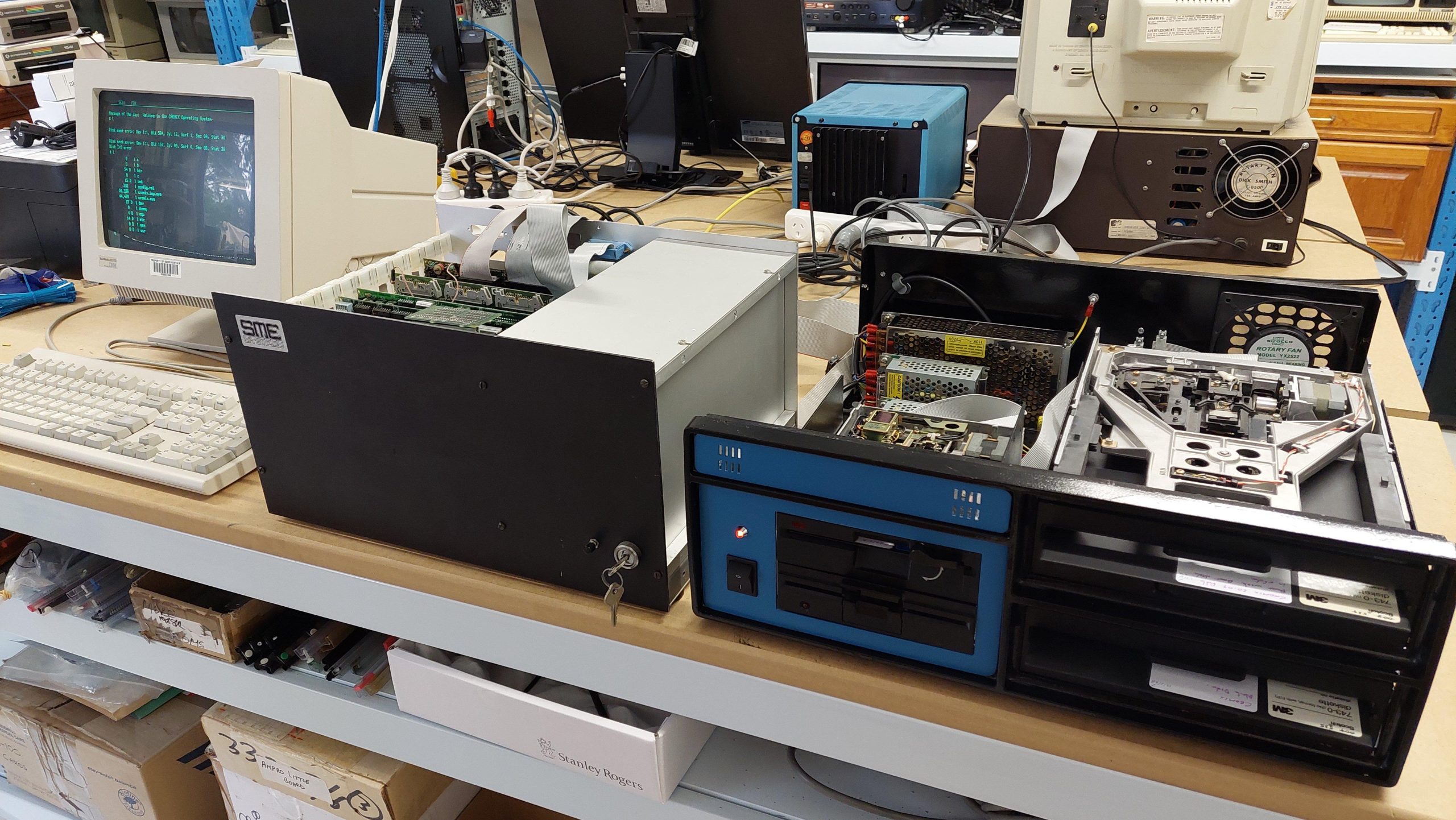- Cromemco 68000 System
- Cromemco SCC and Board Testing
- Cromemco CDOS Build
- Cromemco 68000 System – Getting Started
- First Power up of Cromix System
- Early Attempts to Run 68000 Cromix
- What About Software? Cromix Plus
- Software on Cromix Plus
- More Users and TUARTs
- Swapping to 8″ System Drives
- 8″ Disk Drive Unit
- Solid State Storage
- More Memory
- Using HD 5.25″ FDDs as 8″ Drive Substitutes
At its core this is a Cromemco 68000 system. It lacks the Cromemco chassis and Cromemco disk drives but it has a complete card set including:
- a DPU Dual Processor Card with Z80 and 68000
- a MCU Memory Control Unit
- a 512MSU Memory Storage Unit connected to MCU via a MBus ribbon cable.
- a 16FDC Floppy Drive Controller
- 2x TUART Twin UART
The chassis is an Australian made SME unit. I constructed the drive chassis based on an old STD chassis. It includes two Mitsubishi 8″ drives, a Mitsubishi 5.25 77 track drive and a gotek.
I have since added a modern IDE/CF Card for solid state storage and a modern 8MB RAM card.
It runs a very impressive unix-esque operating system called Cromix Plus. It supports up to 5 users via serial terminals. It can run 68000 programs and most programs written for CP/M. Each user can run multiple tasks.

I will probably do a lot of posts on this machine because it is fairly unusual and involved a lot of work. I do want to mention upfront that the solid state solution in this machine was made possible by the ever innovative John Monahan and software efforts of Damian Wildie.














